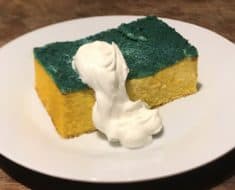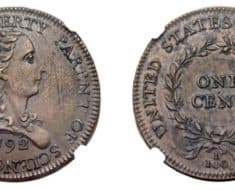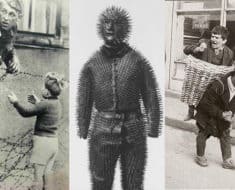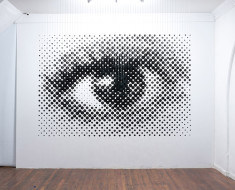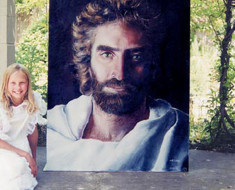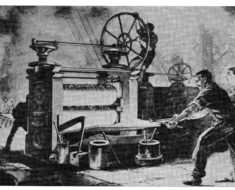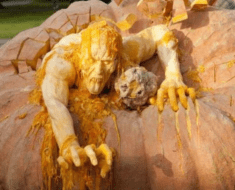While most people have heard of the colourful and elaborate Mardi Gras celebrations that take place around the globe, many of us do not know how it has emerged to become one of the world’s most popular celebrations. Justin Nolan, Associate professor at the University of Arkansas’ Department of Anthropology, provides an overview of the history of Mardi Gras.
Mardi Gras is French for “Fat Tuesday” also known as Shrove Tuesday – the day preceding Ash Wednesday and the beginning of the Christian Lent season. Typically, Christians will observe Lent by fasting or abstaining from meat, fish, eggs, and fats until Easter Sunday for a total of 40 days. In preparation for Lent, those participating in the six-week fast would empty their cupboards of the indulgences they were foregoing, and partake in a final feast on Shrove Tuesday. The Mardi Gras Carnival always commences twelve days after Christmas on January 6th, and festivities last until the evening before Ash Wednesday. This period is well-known for its raucous celebrations, including parades, balls, costume parties, music, and no shortage of excitement.
Early Celebrations
The Mardi Gras tradition has pagan roots that date back thousands of years to Roman festivals like Saturnalia and Lupercalia, celebrations of spring and fertility. Saturnalia was a popular ancient Roman holiday created to honor Saturn – the god of agriculture. It was a riotous holiday celebrated with gambling, singing, feasting, socializing and gift-giving. In contrast, Lupercalia involved animal sacrifice and casual matchmaking to eradicate evil spirits and infertility.
When Christianity made its way to Rome, religious leaders of the time decided it would be easier to allow their converts to maintain some of their local pagan traditions. As a result, alongside Christianity, Mardi Gras celebrations began to spread from Rome to several other European countries such as Germany, France, England, and Spain. While Mardi Gras is celebrated by communities around the globe, New Orleans remains one of the world’s greatest Mardi Gras hosts.
New Orleans Mardi Gras
In March of 1699, the French-Canadian explorer Jean Baptiste Le Moyne Sieur de Bienville came to a plot of land he named “Pointe du Mardi Gras” sixty miles south of New Orleans. This name was chosen upon realizing it was the eve of the festive holiday Mardi Gras. In 1702, Bienville also founded “Fort Louis de la Louisiane” which is now known as Mobile. A year later, Fort Louis de la Mobile saw its first Mardi Gras celebration, which was also the first to take place in America.
While it is important to understand where Mardi Gras celebrations originated, it is equally important to understand the traditions associated with such a historically rich holiday. The following are eight of the most popular Mardi Gras traditions:
Krewes
Krewes are the people behind the ornate masks that are responsible for developing the extravagant floats, costumes, and throws involved in the colorful parades leading up to Mardi Gras. Krewes are non-profit organizations that are individually funded by members through membership fees, sales of Krewe-related merchandise, fundraising events, and corporate sponsorships. Some of the most notable Krewes in New Orleans include Krewe of Zulu, Mardi Gras Indians, Krewe of Bacchus, Krewe of Rex and Krewe of Endymion. While some Krewes pride themselves on exclusivity, other Krewes will accept members if they are willing to pay the ongoing membership dues.
Masks
Justin Nolan states that Mardi Gras in New Orleans is the largest masked party in North America, creating mystery and excitement amongst attendees. Masks were originally intended to conceal the wearers, societal class, allowing people to associate freely with whomever they pleased, which went against clearly defined social norms of the time. As a result, masks allowed celebrators to remain anonymous and provided a deep sense of freedom to partygoers. Today, float riders in New Orleans are required to wear masks by law.
Mardi Gras Colours
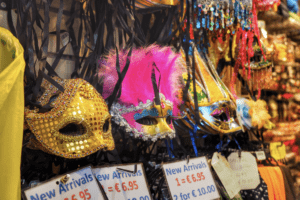
According to the New Orleans website, the famous local historian Errol Flynn Laborde discovered the confusing truth behind the three official Mardi Gras colours while researching a book for the 125th anniversary of the Rex Organization. It has long been claimed that the Rex Organization’s “Symbolism of Colours” parade in 1872 gave birth to the green, purple and gold Mardi Gras colors representing faith, justice, and power. At this time, the King of Carnival declared that balconies should be adorned in these three hues. While it is difficult to discern why these three colors were chosen, Laborde and his team assert that because the U.S., Great Britain and France had tricolor flags, that Mardi Gras should also possess a tricolor theme.
Beads and Throws
A longtime Mardi Gras tradition is the throwing of beads, fake gems and trinkets from Krewe members aboard floats to party-goers celebrating on the streets. This tradition is believed to date back to the late 19th Century when the Carnival King began throwing strands of fake jewels towards his “loyal subjects.” Today, throws can also include cups, toys, and doubloons—items marked with a particular Krewes name. Some Krewes have signature throws, for example, Krewe of Zulu is best known for tossing coconuts and other hand-decorated items.
Mardi Gras Balls
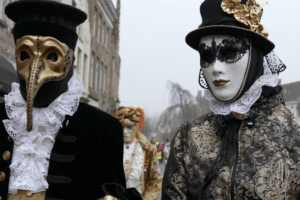
Mardi Gras balls are typically white or black-tie events for Krewe members only and provide affiliates with the opportunity to eat, drink, dance and socialize throughout the evening. Highly traditional balls will feature pageants and performances with reference to historic and mythical stories. Debutantes are also introduced to society and women are hopeful to receive “call-out” cards, where they await a dance from the Krewe member that issued the card. While most balls are completely private affairs, some Krewes have thrown “Super Krewe” balls open to the public.
Mardi Gras Carnival
The terms Mardi Gras and Carnival are often used interchangeably despite the fact that they do not mean the same thing. Carnival begins January 6th each year and includes parades, balls, and all celebrations leading up to Mardi Gras. Mardi Gras is the Tuesday before Ash Wednesday, and is the last day of celebrations before the beginning of Lent.
Flambeaux
The word Flambeaux comes from the French term flambé meaning “flame.” In order to light the way during New Orleans evening parades, the Flambeaux marched with flaming torches that allowed partygoers to witness the beautiful and extravagant floats presented before them. While this was considered a necessity during the poorly lit 19th century parades, Flambeaux is still practiced to evoke interest and nostalgia.
King Cake
King cake season begins when Carnival festivities commence January 6th, when Jesus first presented himself to the three wise men. Each king cake is made from a ring of dough that is braided and topped with sugar sprinkles in the Mardi Gras colours of purple, green and gold. Hidden inside every king cake is a tiny plastic, porcelain or gold baby. The lucky recipient of the tiny doll is chosen as the host of the next king cake party or is in charge of preparing the next king cake.
According to Justin Nolan, Mardi Gras is an important holiday recognized by communities around the world, with century old traditions that continue to stand the tests of time. Understanding the origin of Mardi Gras illuminates’ beliefs and values about the cycles of life that are distinctly human by their very nature. With deeper knowledge of this ancient tradition, experiencing Mardi Gras in New Orleans may be the next step for individuals curious about the meanings tied to this famous seasonal celebration.
















